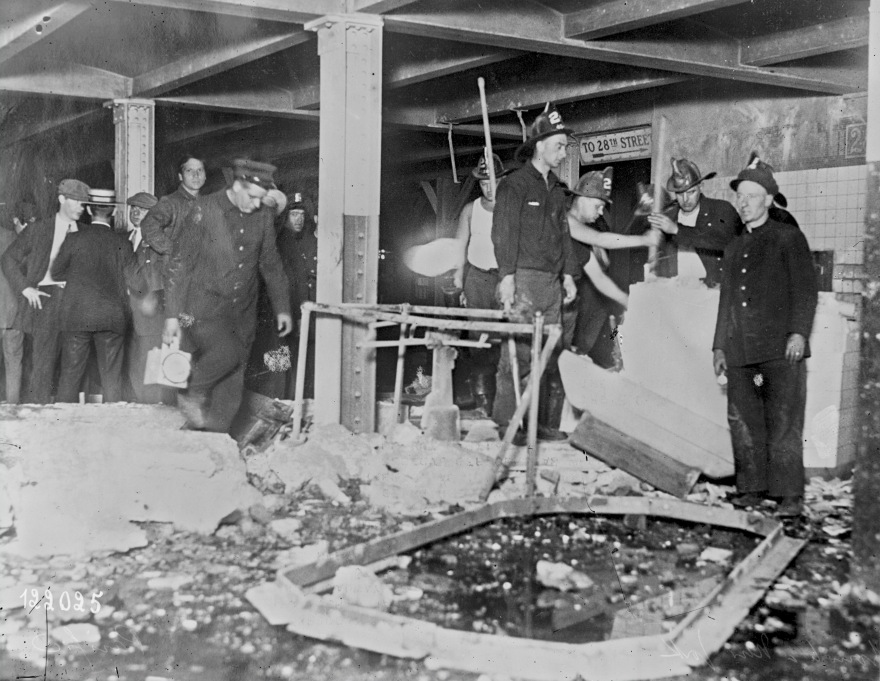
Nicola Sacco and Bartolomeo Vanzetti were two Italian migrant anarchists who were controversially convicted of murdering a guard and a paymaster during the April 15 1920, armed robbery of the Slater and Morrill Shoe Company in Braintree, Massachusetts, United States. Seven years later, they were electrocuted in the electric chair at Charlestown State Prison. Both men adhered to an anarchist movement.
After a few hours’ deliberation on July 14 1921, the jury convicted Sacco and Vanzetti of first-degree murder and they were sentenced to death by the trial judge. Anti-Italianism and anti-immigrant bias were suspected as having heavily influenced the verdict. A series of appeals followed, funded largely by the private Sacco and Vanzetti Defense Committee. The appeals were based on recanted testimony, conflicting ballistics evidence, a prejudicial pretrial statement by the jury foreman, and a confession by an alleged participant in the robbery. All appeals were denied by trial judge Webster Thayer and also later denied by the Massachusetts Supreme Judicial Court. By 1926, the case had drawn worldwide attention. As details of the trial and the men’s suspected innocence became known, Sacco and Vanzetti became the center of one of the largest causes célèbres in modern history. In 1927, protests on their behalf were held in every major city in North America and Europe, as well as in Tokyo, Sydney, Melbourne, São Paulo, Rio de Janeiro, Buenos Aires, Dubai, Montevideo, Johannesburg, and Auckland.
Celebrated writers, artists, and academics pleaded for their pardon or for a new trial. Harvard law professor and future Supreme Court justice Felix Frankfurter argued for their innocence in a widely read Atlantic Monthly article that was later published in book form. The two were scheduled to die in April 1927, accelerating the outcry. Responding to a massive influx of telegrams urging their pardon, Massachusetts governor Alvan T. Fuller appointed a three-man commission to investigate the case. After weeks of secret deliberation that included interviews with the judge, lawyers, and several witnesses, the commission upheld the verdict. Sacco and Vanzetti were executed in the electric chair just after midnight on August 23 1927. Subsequent riots destroyed property in Paris, London, and other cities.
Investigations in the aftermath of the executions continued throughout the 1930s and 1940s. The publication of the men’s letters, containing eloquent professions of innocence, intensified belief in their wrongful execution. Additional ballistics tests and incriminating statements by the men’s acquaintances have clouded the case. On August 23, 1977—the 50th anniversary of the executions—Massachusetts Governor Michael Dukakis issued a proclamation that Sacco and Vanzetti had been unfairly tried and convicted and that “any disgrace should be forever removed from their names”.
Italian anarchist Severino Di Giovanni, one of the most vocal supporters of Sacco and Vanzetti in Argentina, bombed the American embassy in Buenos Aires a few hours after the two men were sentenced to death. A few days after the executions, Sacco’s widow thanked Di Giovanni by letter for his support and added that the director of the tobacco firm Combinados had offered to produce a cigarette brand named “Sacco & Vanzetti“. On November 26, 1927, Di Giovanni and others bombed a Combinados tobacco shop. On December 24, 1927, Di Giovanni blew up the headquarters of The National City Bank of New York and of the Bank of Boston in Buenos Aires in apparent protest of the execution. In December 1928, Di Giovanni and others failed in an attempt to bomb the train in which President-elect Herbert Hoover was traveling during his visit to Argentina.
Three months later, bombs exploded in the New York City Subway, in a Philadelphia church, and at the home of the mayor of Baltimore. The house of one of the jurors in the Dedham trial was bombed, throwing him and his family from their beds. On May 18, 1928, a bomb destroyed the front porch of the home of executioner Robert Elliott. As late as 1932, Judge Thayer‘s home was wrecked and his wife and housekeeper were injured in a bomb blast. Afterward, Thayer lived permanently at his club in Boston, guarded 24 hours a day until his death on April 18, 1933.
The New York Subway bombs injured many persons, one of them it was believed, fatally.
On 6th August 1927, two bombs detonated in the New York City subway. Two bombs exploded at 28th Street (BMT Broadway Line) and 28th Street (IRT Lexington Avenue Line) This image reveals some of the damage done, along with workmen hurriedly repairing a station.
The attack was again the work of anarchists. It was carried out in retaliation for the trial of the Italian anarchists Ferdinando Nicola Sacco and Bartolomeo Vanzetti who were executed later that month in Boston.
At least one person died in the bombing, with others wounded.
In 1927, Italian-born anarchists Nicola Sacco and Bartolomeo Vanzetti were executed in Boston for the murders of two men during a 1920 robbery. They were vindicated in 1977 by Massachusetts Gov. Michael S. Dukakis.